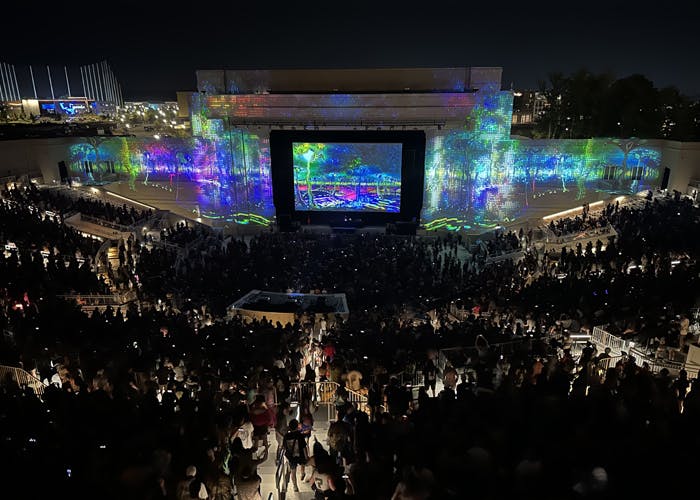
New: Funktion-One's Projection System Design Software
Funktion-One is proud to announce the full release of Projection v1.0 system design software, featuring an advanced wave-based low frequency model. Projection delivers fast, direct sound prediction and rigging calculations, enabling users to design and optimise Funktion-One systems with unparalleled accuracy.
Projection allows users to quickly build complex venues in 2D, streamlining the design process with an intuitive interface. Users can seamlessly add arrays, individual loudspeakers and microphones, optimising both mechanical and electronic array settings. The software’s advanced 3D view enables SPL calculations, providing a comprehensive visualisation of the design and allowing for precise adjustments.
Projection features two powerful 3D SPL calculation algorithms, including a new fast wave-based low-frequency model. This breakthrough technology fully predicts linear wave behaviour, including reflections, diffractions and occlusions, ensuring accurate performance simulations. The physical geometry of the loudspeakers is included in the calculation, a feature previously limited to expensive, specialised R&D software requiring powerful hardware. For frequencies above 160Hz, the real-time point source model delivers immediate and accurate insights into system behaviour.
Projection’s wave-based low-frequency model represents a major breakthrough in bass array simulation. Traditional industry-standard modelling relies on the complex directivity point source model, which assumes loudspeakers are infinitely small relative to their emitted wavelengths. While effective for small bass speakers or stacks, this method loses accuracy as arrays increase in size.
Funktion-One initially implemented a point source model but identified key limitations: accuracy diminishes with larger bass arrays and users are constrained to predefined configurations. In response, the loudspeaker manufacturer embarked on an extensive research project, leading to the development of the fast wave-based model.
The wave-based model offers significant advantages: greater flexibility in bass array design, accurate results across configurations and freedom for users to experiment beyond traditional measured array setups. Novel cardioid arrays can be designed and tested with confidence, as the model correctly calculates acoustic path lengths and their impact on phase interactions.
Additional benefits include automatic inclusion of subtleties such as periodic gaps in broadside arrays and scattering effects from adjacent bass loudspeakers. End fire cardioid arrays can be precisely modelled, as the physical presence of each speaker is factored into the calculation, ensuring high-fidelity simulations for real-world applications.

